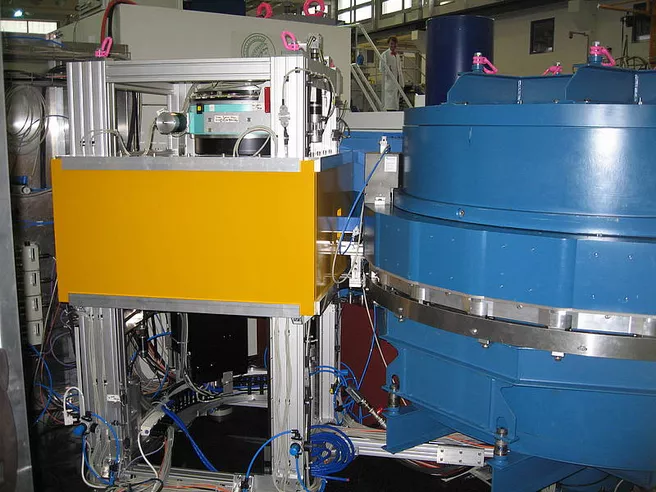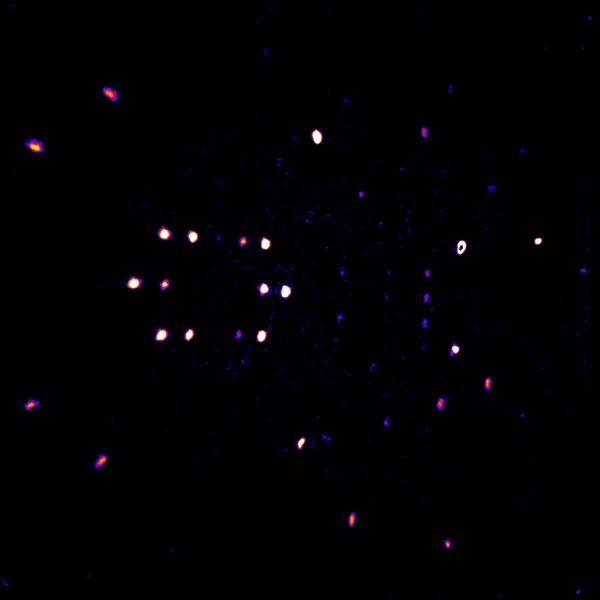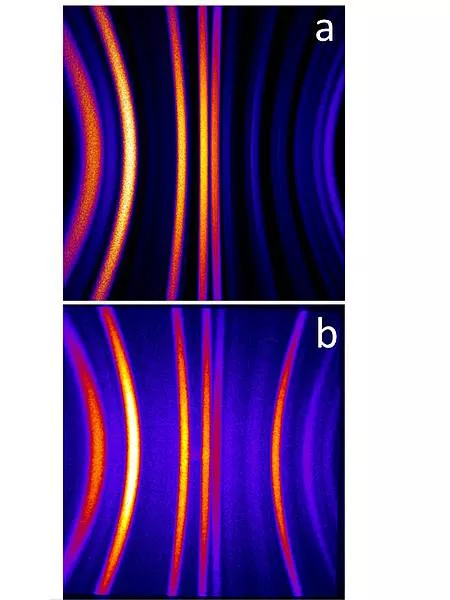The instrument in the neutron guide hall west is operated in a cooperation between the neutron source FRM II and the Jülich Centre for Neutron Science (JCNS).
The first plans for a single crystal diffractometer for biological macromolecules date back to the year 2000. After the funding was assured, the FRM II and JCNS began with the construction of the instrument. For example, Jülich engineers and workers of the mechanical workshop constructed the monochromator unit and shielding, whereas the specialists in Garching made the detector frame.
Instrument scientist Dr. Andreas Ostermann works for the FRM II and his colleague Dr. Tobias Schrader represents the JCNS. Together, they built the instrument such that it is now ready for first test measurements (see Fig. 1).
The first beam on October 4th hit a protein crystal of myoglobin, to test the capability of the instrument BioDiff. The result is promising (see Fig. 2). Further testing was performed with a powder of yttrium-iron garnet. The measured values (Fig. 3b) were compared with a Monte-Carlo-Simulation (Fig. 3a). The results are in good agreement. The Monte-Carlo-Simulation simulates the entire instrument via computer, including the sample.
It is planned to determine the 3-dimensional structures of enzymes with the BioDiff. Using BioDiff, the positions of the H-Atoms are visualized, which greatly determine the function of the enzyme. The aim of the investigation could be for example to find out the protonation states of certain parts in the active centre of the enzyme for a given pH-value.
Starting from spring 2011, the BioDiff will be available for experiments of users.


